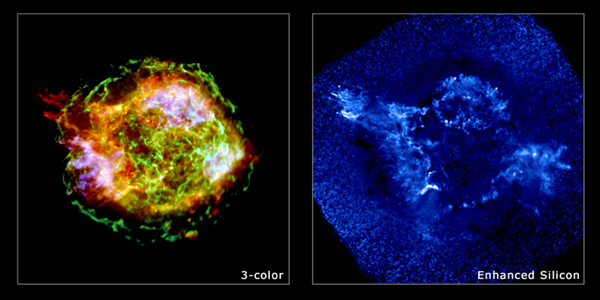
 |
 |
|
||||
|
Cassiopeia A: The remnant of a supernova 10,000 light years from Earth. Caption: This Chandra image is the most detailed ever made of the remains of an exploded star. The one-million-second image (left) shows a bright outer ring (green) ten light years in diameter that marks the location of a shock wave generated by the supernova explosion. A large jet-like structure protrudes beyond the shock wave in the upper left. In a specially processed image (right) which highlights silicon ions, a counter-jet can be seen on the lower right. In the main image, the bright blue fingers located near the shock wave on the lower left are composed almost purely of iron gas. This iron was produced in the central, hottest regions of the star and somehow ejected in a direction almost perpendicular to the jets. One explanation for the jets is that they were produced by a rapidly rotating, highly magnetized neutron star (central white dot) soon after the supernova explosion. Scale: Each panel is 8 arcmin per side Chandra X-ray Observatory ACIS Image |